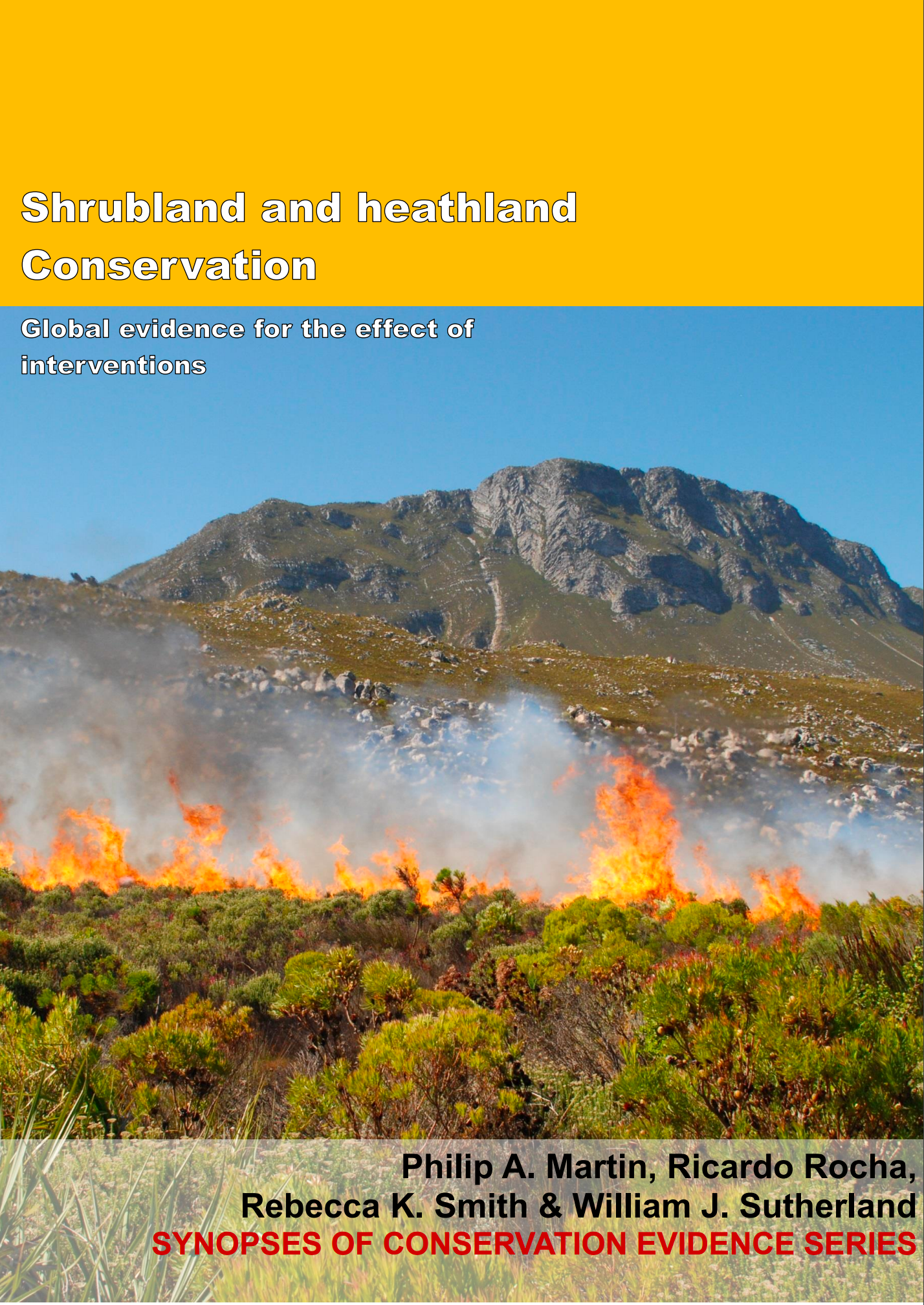Reinstate the use of traditional burning practices
-
Overall effectiveness category Unknown effectiveness (limited evidence)
-
Number of studies: 4
View assessment score
Hide assessment score
How is the evidence assessed?
-
Effectiveness
40% -
Certainty
30% -
Harms
12%
Study locations
Supporting evidence from individual studies
A systematic review of five studies of the impact of prescribed burning on lowland heathland vegetation in North Western Europe (Newton et al. 2008) found that burning did not increase the cover of grass species, relative to heather species. There was no evidence of publication bias that would influence the outcomes of the systematic review. The systematic review summarised the impacts of burning at eight sites from five studies, four of which represented before-and-after trials. Of 266 potentially relevant references only five presented information on the impacts of burning that could be used by the systematic review.
Study and other actions testedA before-and-after study in 1978–1983 in two heathland sites in the UK (Hobbs & Gimingham 1984) found that prescribed burning initially decreased cover of most plant species, but that their cover subsequently increased. Cover of common heather Calluna vulgaris was lower immediately after burning than before burning (after: 5–42%, before: 52–100%) but this increased after three years to 9–63% cover. Similarly cover of the shrubs bell heather Erica cinerea (immediately after: 2–24%, before: 55–92%, after three years: 21–85%) and bearberry Arctosaphylos uva-ursi (immediately after: 2–43%, before: 46–97%, after three years: 5–65%) initially decreased following fire and then increased after three years. The number of plant species was lower immediately after prescribed burning than before burning (after: 4–11 species, before: 10–31 species) but this increased after three years to 19–30 species. No statistical analyses were carried out in this study. Fourteen areas of the two heathland sites were burned in 1978 or 1979. Four 1 m2 quadrats were placed in each burned area and cover of plant species recorded three times a year in 1978–1980, including before burning took place.
Study and other actions testedA replicated study in 1987–1989 in a moorland site in the Yorkshire, UK (Liepert et al. 1993) found that heather Calluna vulgaris regeneration was similar in burned and cut areas. After two years, cover of heather did not differ between burned (young heather: 58%; old heather: 29%) and cut areas (young heather: 77%; old heather: 17%). Additionally, after two years, neither shoot nor seedling growth differed significantly between burned (shoot: 37 cm; seedling: 21 cm) and cut areas (shoot: 34 cm; seedling: 26 cm). Heather was burned in six plots and cut in six others. During the study the plots were exposed to light grazing by sheep. Vegetation was sampled annually in July using 0.25 m2 quadrants placed in the centre of each plot.
Study and other actions testedA systematic review of five studies of the impact of prescribed burning on lowland dry heathland vegetation in the UK (Stewart et al. 2004) found that prescribed burning did not alter the diversity (presented as Simpson’s diversity) or number of plant species of heathland sites. There was no evidence of publication bias that would influence the outcomes of the systematic review. The systematic review summarised the impacts of prescribed burning at 12 sites from five studies, with six of the sites representing before-and-after trials and the remaining six representing site comparisons. Of 280 potentially relevant references only five presented information on the impacts of prescribed fire that could be used by the systematic review.
Study and other actions tested
Where has this evidence come from?
List of journals searched by synopsis
All the journals searched for all synopses
This Action forms part of the Action Synopsis:
Shrubland and Heathland Conservation
Shrubland and Heathland Conservation - Published 2017
Shrubland and Heathland synopsis





)_2023.JPG)














